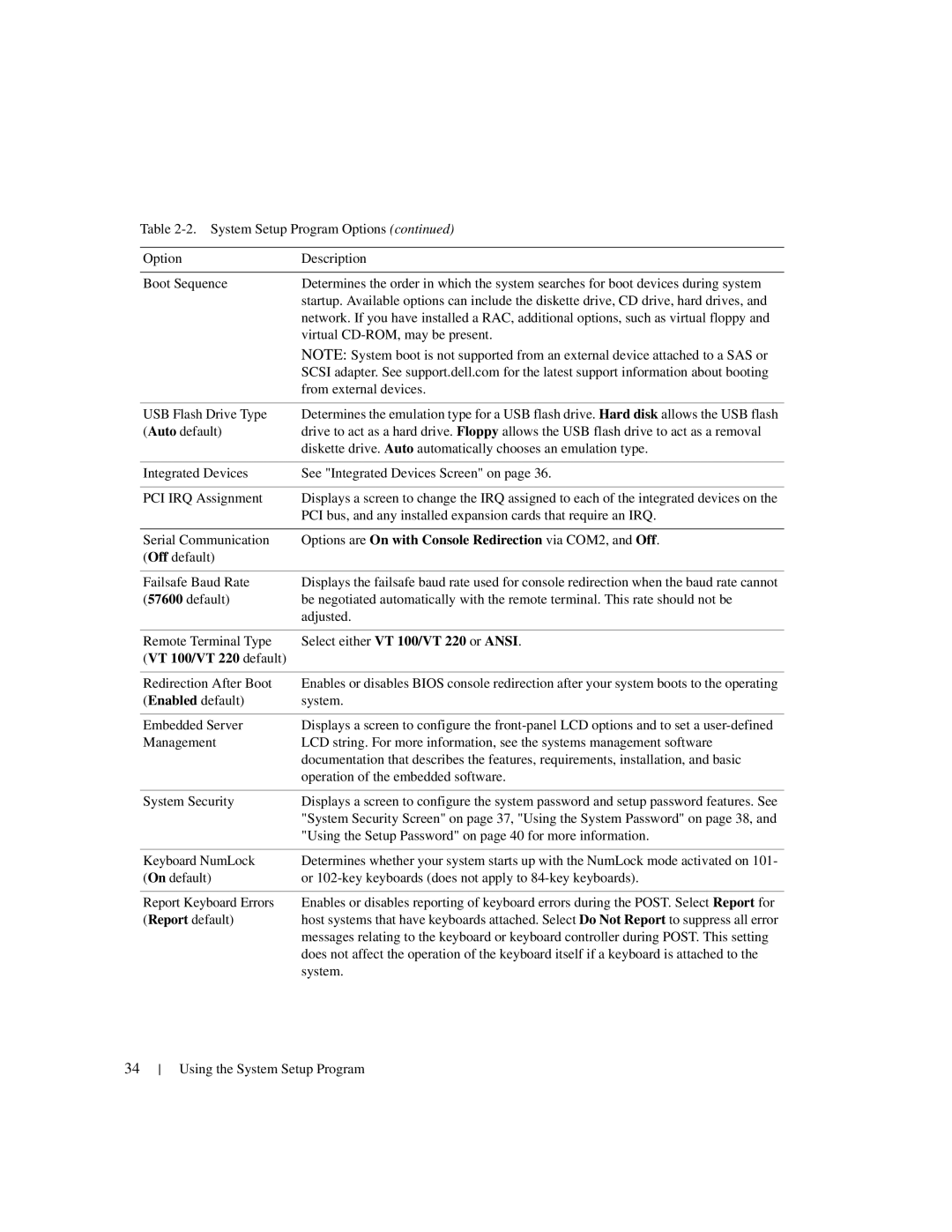
Table
Option | Description |
|
|
Boot Sequence | Determines the order in which the system searches for boot devices during system |
| startup. Available options can include the diskette drive, CD drive, hard drives, and |
| network. If you have installed a RAC, additional options, such as virtual floppy and |
| virtual |
| NOTE: System boot is not supported from an external device attached to a SAS or |
| SCSI adapter. See support.dell.com for the latest support information about booting |
| from external devices. |
|
|
USB Flash Drive Type | Determines the emulation type for a USB flash drive. Hard disk allows the USB flash |
(Auto default) | drive to act as a hard drive. Floppy allows the USB flash drive to act as a removal |
| diskette drive. Auto automatically chooses an emulation type. |
|
|
Integrated Devices | See "Integrated Devices Screen" on page 36. |
|
|
PCI IRQ Assignment | Displays a screen to change the IRQ assigned to each of the integrated devices on the |
| PCI bus, and any installed expansion cards that require an IRQ. |
|
|
Serial Communication | Options are On with Console Redirection via COM2, and Off. |
(Off default) |
|
|
|
Failsafe Baud Rate | Displays the failsafe baud rate used for console redirection when the baud rate cannot |
(57600 default) | be negotiated automatically with the remote terminal. This rate should not be |
| adjusted. |
|
|
Remote Terminal Type | Select either VT 100/VT 220 or ANSI. |
(VT 100/VT 220 default) |
|
|
|
Redirection After Boot | Enables or disables BIOS console redirection after your system boots to the operating |
(Enabled default) | system. |
|
|
Embedded Server | Displays a screen to configure the |
Management | LCD string. For more information, see the systems management software |
| documentation that describes the features, requirements, installation, and basic |
| operation of the embedded software. |
|
|
System Security | Displays a screen to configure the system password and setup password features. See |
| "System Security Screen" on page 37, "Using the System Password" on page 38, and |
| "Using the Setup Password" on page 40 for more information. |
|
|
Keyboard NumLock | Determines whether your system starts up with the NumLock mode activated on 101- |
(On default) | or |
|
|
Report Keyboard Errors | Enables or disables reporting of keyboard errors during the POST. Select Report for |
(Report default) | host systems that have keyboards attached. Select Do Not Report to suppress all error |
| messages relating to the keyboard or keyboard controller during POST. This setting |
| does not affect the operation of the keyboard itself if a keyboard is attached to the |
| system. |
34
Using the System Setup Program
